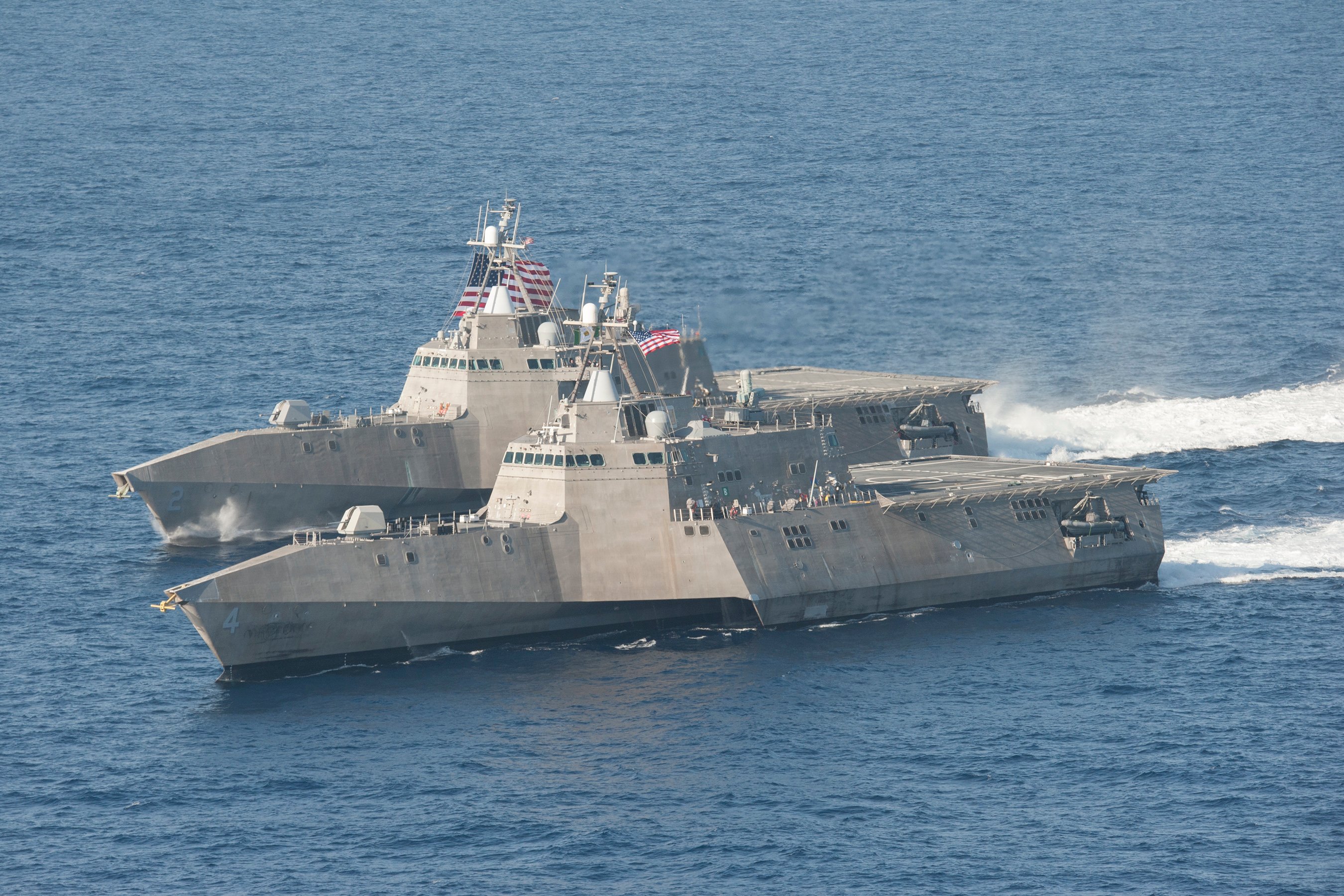
The Littoral Combat Ship’s anti-submarine warfare mission package needs to shed some weight before it can deploy on a ship, and the Navy awarded three contracts to help find weight-reduction ideas.
The mission package includes two mature and fielded sonar systems, plus the hardware needed to integrate the systems with the ship. LCS Mission Module Program Manager Capt. Casey Moton said Thursday at a Mine Warfare Association lunch that each of his three mission modules is given 105 metric tons of weight on the LCS, but the ASW as it stands today surpasses that limit.
The mission package includes a Variable-Depth Sonar – the Navy chose the Thales UK Sonar 2087, the same VDS used on the Royal Navy’s Type 23 frigate – as well as the Multi-Function Towed Array used on the Arleigh Burke-class destroyers (DDG-51) and eventually the Zumwalt-class destroyers (DDG-1000). The Navy cannot overhaul either mature system, so it has hired Advanced Acoustic Concepts, L-3 Communications and Raytheon to find more creative ways to reduce weight.
In the early stages of the weight-reduction effort, “we got proposals that ranged from modifying the sensors to reduce weight to things as simple as using composites in the handling system,” Moton said.
“So our initial contract is to three companies, and they will do a transition study for us over the next couple months that will give us a lot more insight.”
Each team will submit a package that brings the mission module to under 105 metric tons, and the Navy will then pick and choose which ideas it likes and use them to build engineering development models. Moton said his office had not decided how many EDMs to build but would make that decision over the next few months.
He said he could not recall how many tons over weight the current ASW package is, but “all three companies proposed schemes that would get us to the weight” and he was confident he could meet the requirement to get onboard a ship.
Also during his speech, Moton said his office was making some minor adjustments to the Lockheed Martin AGM-114L Longbow Hellfire radar-guided missile, which the Navy is adapting for use on the ship. The missile currently launches horizontally from a helicopter, and the Navy is making modifications so it can launch vertically and lock on its target after tipping into a horizontal position post-launch. The new version of the missile will be called the Surface-to-Surface Missile Module and should be fully integrated and ready for deployment by late 2017, according to a Navy statement.
The program office began tests on a research vessel at the end of February against “high-speed maneuvering targets out off the Virginia Capes.” That testing wrapped up in June, and based on the results, the office has to do “some tweaking – it’s really that level, tweaking – to the missile seeker and such.”
Another round of testing on the research vessel will take place in Fiscal Year 2016.
Moton also said his office is currently conducting a technical evaluation of the surface warfare mission package on USS Coronado (LCS-4). The package has already deployed twice, but both times on Freedom-variant LCSs. Coronado is an Independence-variant ship, with the same interfaces for the mission package but a different physical layout. Moton said the evaluation is “going very well.”





